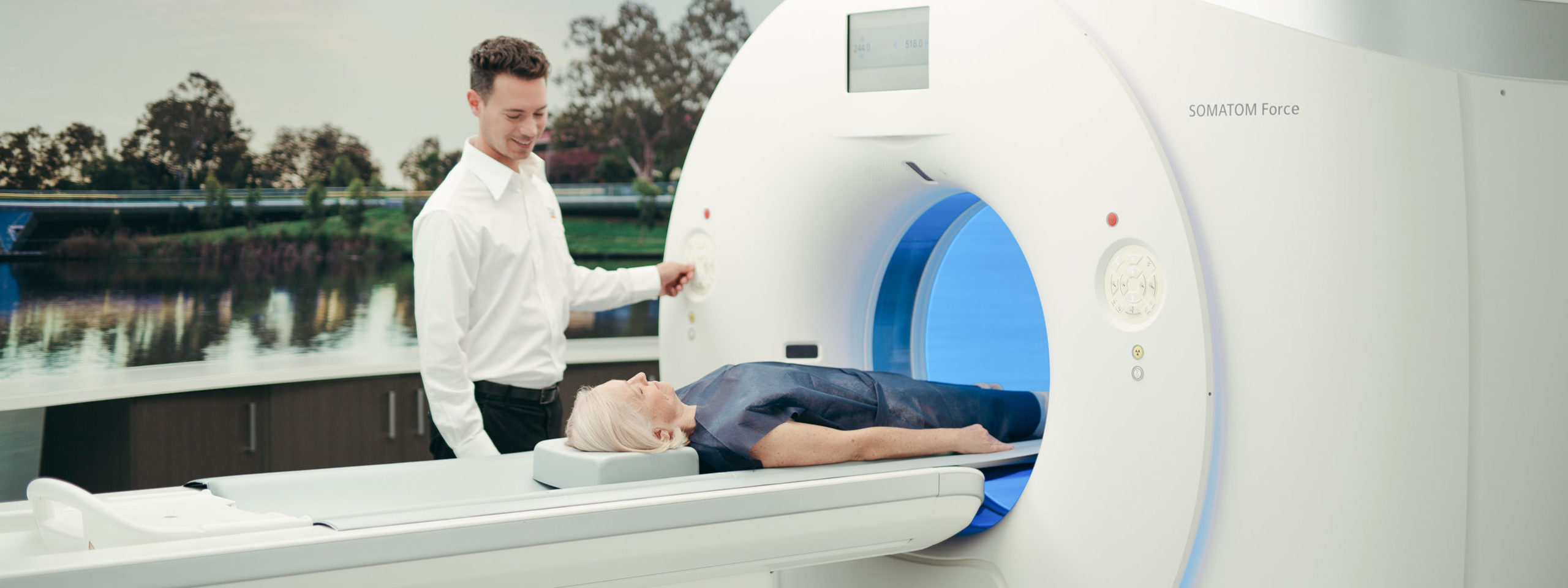A CT Arthrogram is an injection of contrast dye or a radio-active tracer into a joint to better see internal joint structures during an x-ray, CT, MRI or nuclear medicine examination.
Procedure
The procedure will vary depending on the joint being injected and the type of scan being used. Usually, you will lie down and your skin will be cleaned with antiseptic where the needle will be inserted. The radiologist inserts a fine needle into the joint that your doctor has asked us to inject using an aseptic technique (strict infection control practices). We use x-ray or ultrasound to guide the placement of the needle safely and accurately into the correct position in your joint.
X-ray contrast is usually injected into the joint to confirm that the needle is in the correct location.
For a CT arthrogram, a larger volume of x-ray contrast is injected, and then you will be transferred to the CT machine.
For nuclear medicine studies, you will be transferred to the nuclear medicine section for imaging once the radio-tracer has been injected.
For an MRI arthrogram, another contrast (Gadolinium) is also injected to distend the joint and you are then moved to the MRI machine for your scan.
You may experience a feeling of fullness and /or tightness as the joint is distended with fluid, but the procedure is usually well tolerated.
Before your Scan
Before the CT arthrogram, you may be asked to change into an examination gown for your comfort, and to ensure clothing does not affect the images. You may also be asked to remove jewellery, eye-glasses and any metal objects that might interfere with the imaging.
You may eat and drink as normal before and after the procedure. If you are on any medication or have diabetes and are on insulin, take your usual medicines and diet.
Please inform us if you are on medication to thin your blood (e.g. Warfarin, Aspirin or Clopidogrel), have an iodine allergy, or are pregnant or breastfeeding.
Risks / Side effects
Arthrogram injections are generally very safe.
- Potential risks include infection within the soft tissues or joint, which is an uncommon, but serious, side effect.
As part of the CT, you may need to have an injection of a IV contrast . This medication is administered intravenously (injection into vein) through a needle. When the injection goes in you may have a warm feeling in the face, neck or pelvis. This usually lasts for a brief period then disappears. These feelings are normal and not an allergic reaction.
Occasionally (<1%), mild allergic reactions such as a rash, hives or sneezing can occur. These usually develop at the time of scanning, do not require treatment and settle rapidly. Sometimes a mild reaction such as a skin rash may occur from 1 hour to 1 week after injection.
Less commonly (<1 in 100,000 patients), more severe reactions can occur including asthma or shock. Severe, life threatening reactions up to and including death have occurred but are extremely rare. In the event of a reaction, we have equipment and trained staff available to begin immediate treatment.
Read more information on IV contrast.
Other Information
It is important that you have someone to drive you home after the procedure.
Any discomfort in the joint should settle within 24 hours as the contrast is absorbed.
No strenuous activity for 48 hours after the arthrogram.
Occasionally there may be soreness or bruising at the site of the injection. If required, an analgesic such as paracetamol (Panadol) should be sufficient. An ice pack may also provide some relief.
It is important to note that infection is a potential and serious side effect – if you notice any fever or redness, swelling, or increased pain at the injection site after the first 2 days, notify your referring doctor or immediately call the clinic where the injection was performed.
Are you ready to make your CT (Computed Tomography) Scan appointment?
Our online booking platform allows you to quickly and easily make an appointment online.



